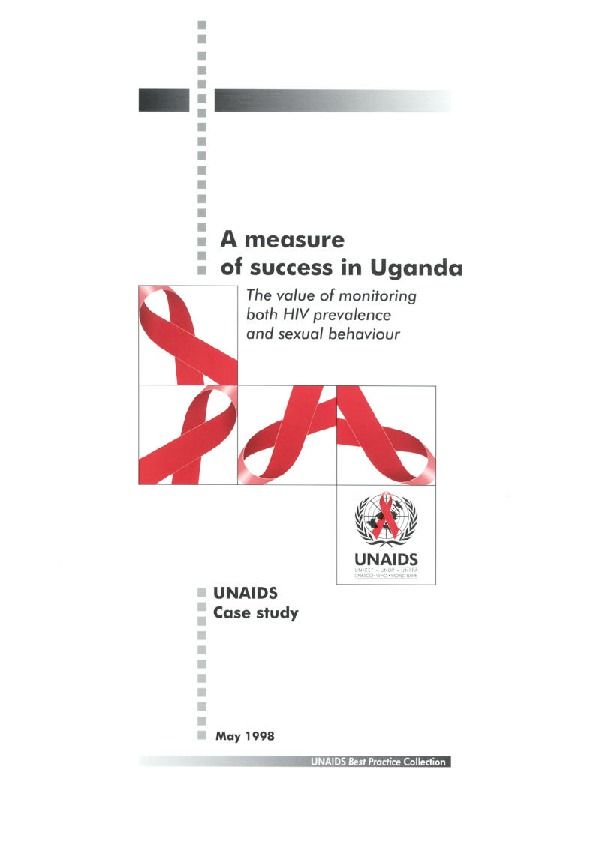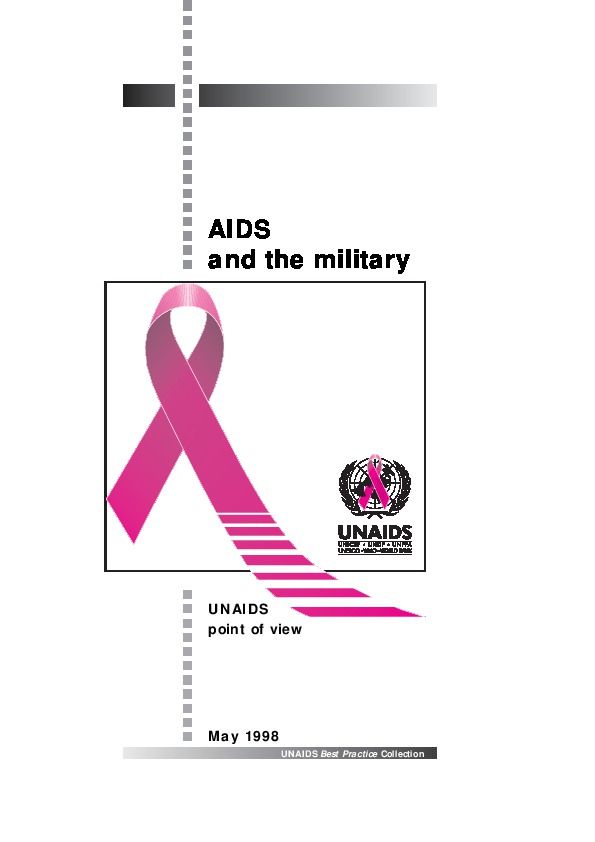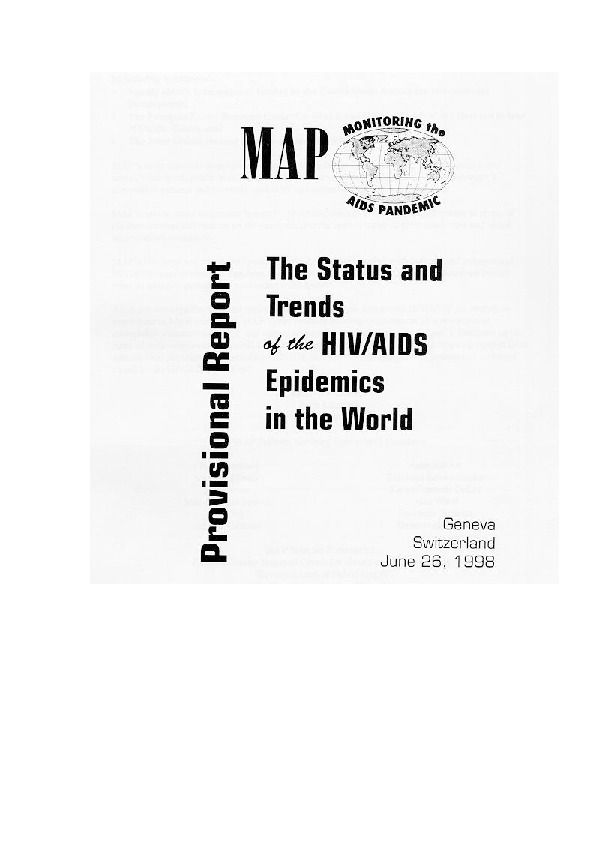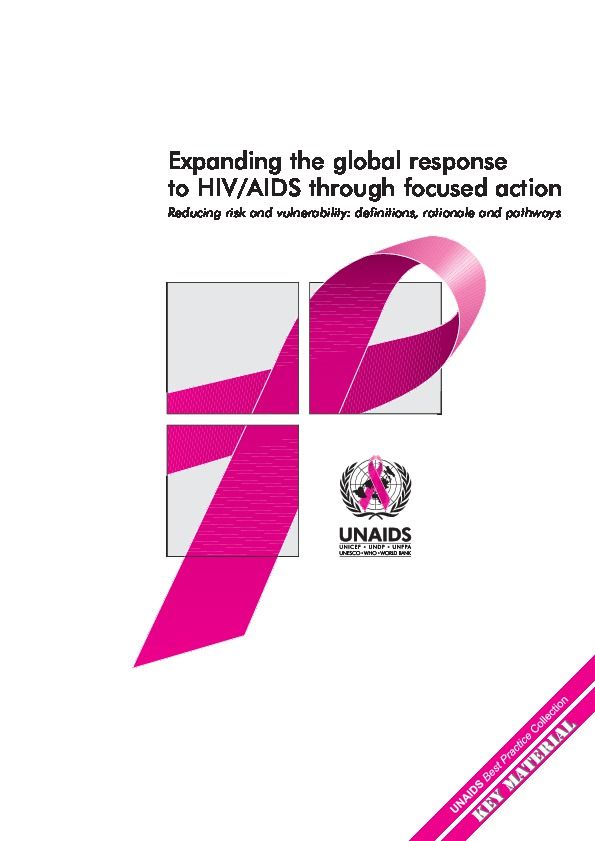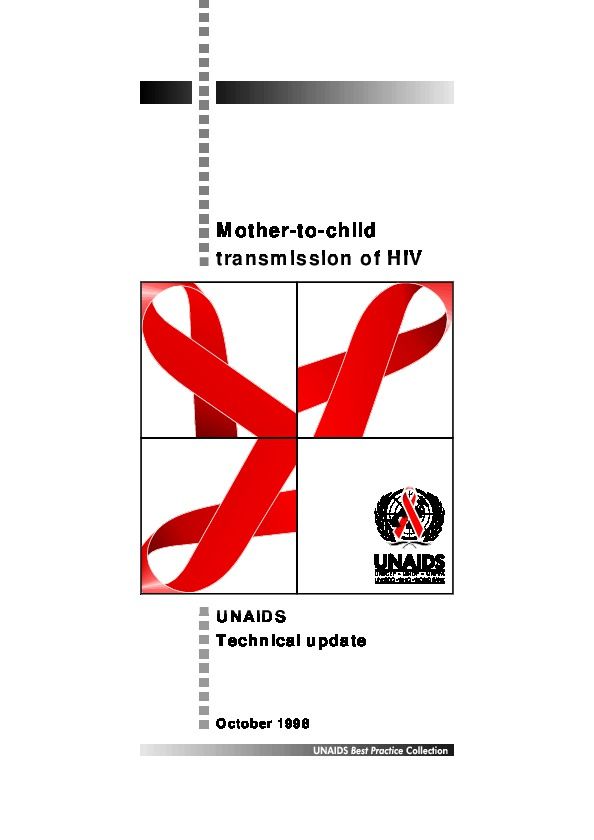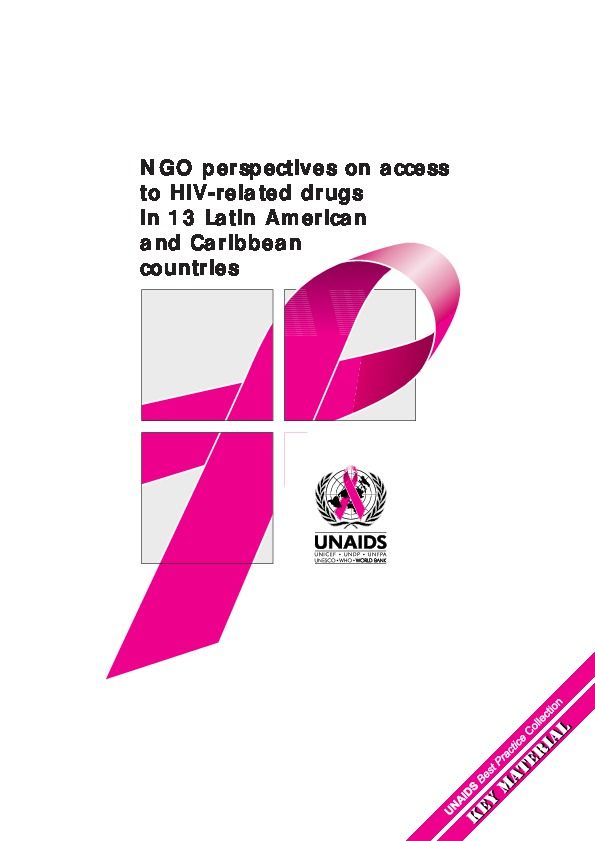Documents
A measure of success in Uganda: The value of monitoring both HIV prevalence and sexual behaviour
30 May 1998
This 1998 report from the UNAIDS Best Practice Collection demonstrates the importance of collecting adequate data and undertaking efforts to monitor risk behaviour and HIV prevalence can help make the response to the AIDS epidemic within a country more effective. In Uganda the impact of the epidemic was recognized early and the government and all civil society partners reacted effectively to reduce its impact.
Documents
AIDS and the Military
19 June 1998
Military personnel are a population group at special risk of exposure to sexually transmitted diseases (STDs), including HIV. In peace time, STD infection rates among armed forces are generally 2 to 5 times higher than in civilian populations; in time of conflict the difference can be 50 times higher or more.
Documents
Expanding the global response to HIV/AIDS through focused action Reducing risk and vulnerability: definitions, rationale and pathways
22 September 1998
Documents
The public health approach to Sexually Transmitted Diseases control. STD
23 September 1998
Around 340 million new cases of curable sexually transmitted diseases (STDs) are estimated by the World Health Organization (WHO) to have ocurred throughout the world in 1995 in men and women aged 15-49 years. In developing countries, STDs and their complications rank in the top five disease categories for which adults seek health care. In women of childbearing age, STDs - even excluding HIV - are second only to maternal factors as causes of disease, death and healthy life lost.
Documents
Gender and HIV/AIDS
24 September 1998
Gender roles and relations have a significant influence on the course and impact of the HIV/AIDS epidemic in every region of the world. Understanding the influence of gender roles and relations on individuals’ and communities’ ability to protect themselves from HIV and effectively cope with the impact of AIDS is crucial for expanding the response to the epidemic.
Documents
Mother to child Transmission
23 October 1998
Mother-to-child transmission (MTCT) is by far the largest source of HIV infection in children under the age of 15. In countries where blood products are regularly screened and clean syringes and needles are widely available, it is virtually the only source in young children. In 1997, an estimated 600,000 infants worldwide were infected with the virus, bringing the total number of young children living with HIV to over 1 million at the end of the year.
Documents
NGO perspectives on access to HIV-related drugs in 13 Latin American and Caribbean countries
19 November 1998
Documents
Access to Drugs
02 December 1998
While people living with HIV infection or AIDS may live many years before their infection leads to secondary diseases and eventually AIDS, survival with advancing HIV infection is complicated with symptoms and medical conditions. Many of these symptoms and conditions, and the advance of HIV itself, are manageable with drugs. However, access to even the most basic of drugs is seriously lacking in many parts of the world.

